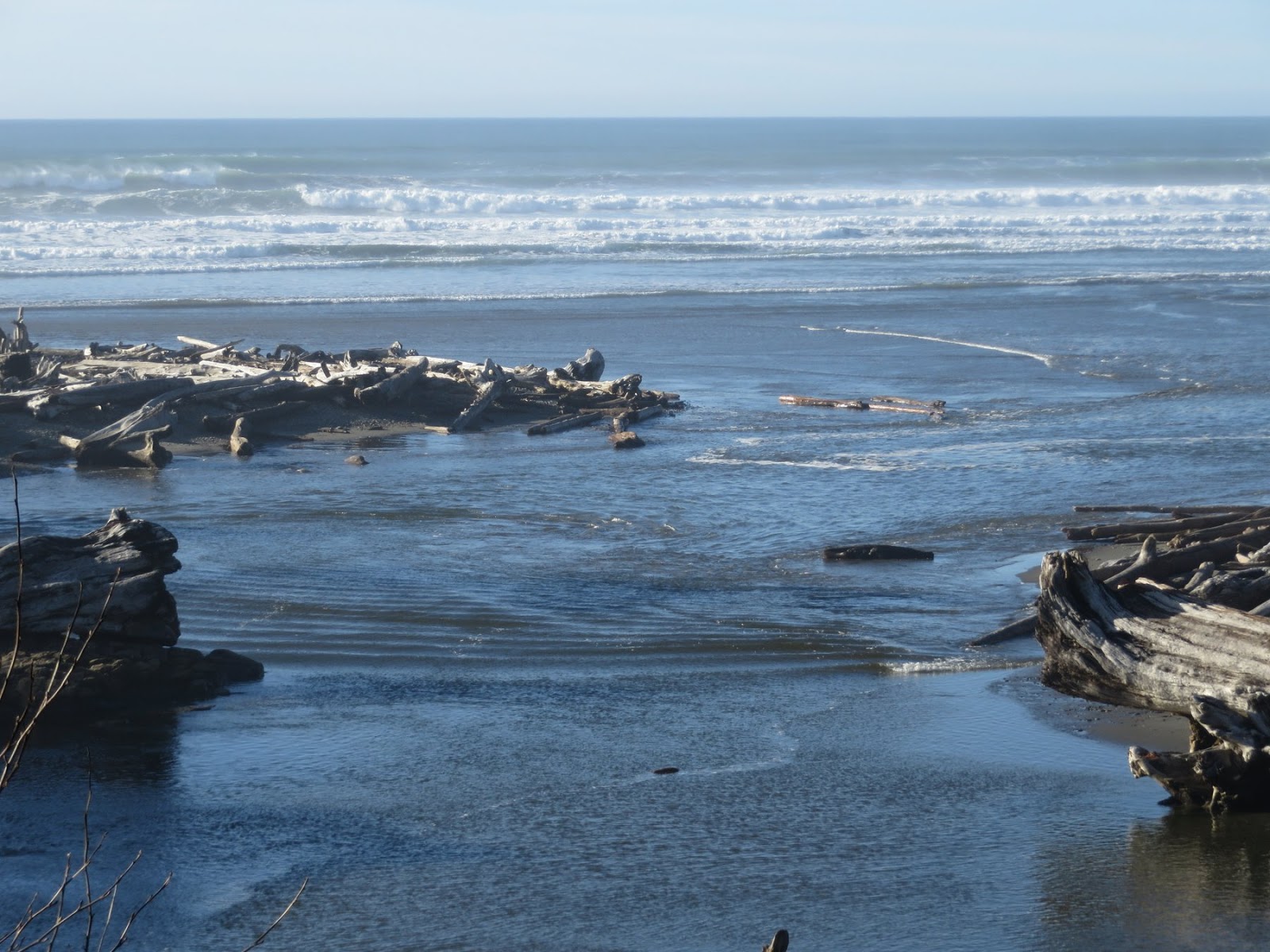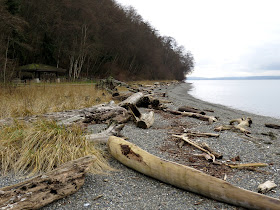Two posts back, at Lake Quinault, I noted that beaches are easy to make. But that doesn't mean that they are simple, that they are all the same, or that they fail to exhibit an amazing amount of small-scale spatial and temporal variability.
 A late afternoon walk at Golden Gardens found lots of stuff happening - much of which will be erased within a few tide cycles. And replaced with something else.
A late afternoon walk at Golden Gardens found lots of stuff happening - much of which will be erased within a few tide cycles. And replaced with something else.
 Waves on a rising tide will sometimes leave a swash bar like this sandy one lapped up onto the beach face. Perhaps the band of gravel at the water line was the coarse lag left behind when that rising tide pushed the sand up the beach. Seepage from the beach face formed complex alluvial channels on the lower beach face. A high tide gravel ridge to the north recorded the story of strong southerly waves during a recent high tide.
Waves on a rising tide will sometimes leave a swash bar like this sandy one lapped up onto the beach face. Perhaps the band of gravel at the water line was the coarse lag left behind when that rising tide pushed the sand up the beach. Seepage from the beach face formed complex alluvial channels on the lower beach face. A high tide gravel ridge to the north recorded the story of strong southerly waves during a recent high tide.Meadow Point is a barrier beach that curves sharply and there are big differences as you walk from the sandy beach on the south to the gravelly one on the north. By the way, this northern beach was probably always coarser than the southern one, but the current pattern was reinforced by the gravel that was added in the mid 1990s to address the chronic erosion of the northern shore (possibly attributable to the loss of sediment from the north after the railroad was built, but that's another story).
AERIAL VIEW



















